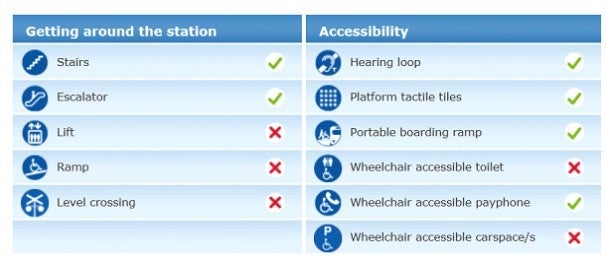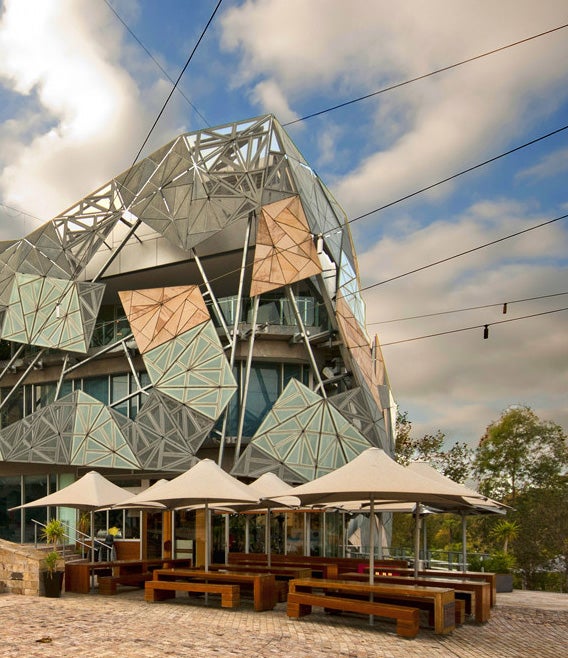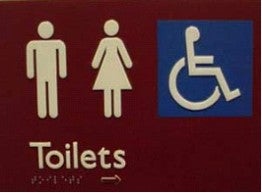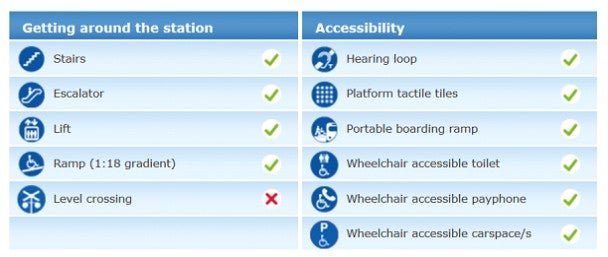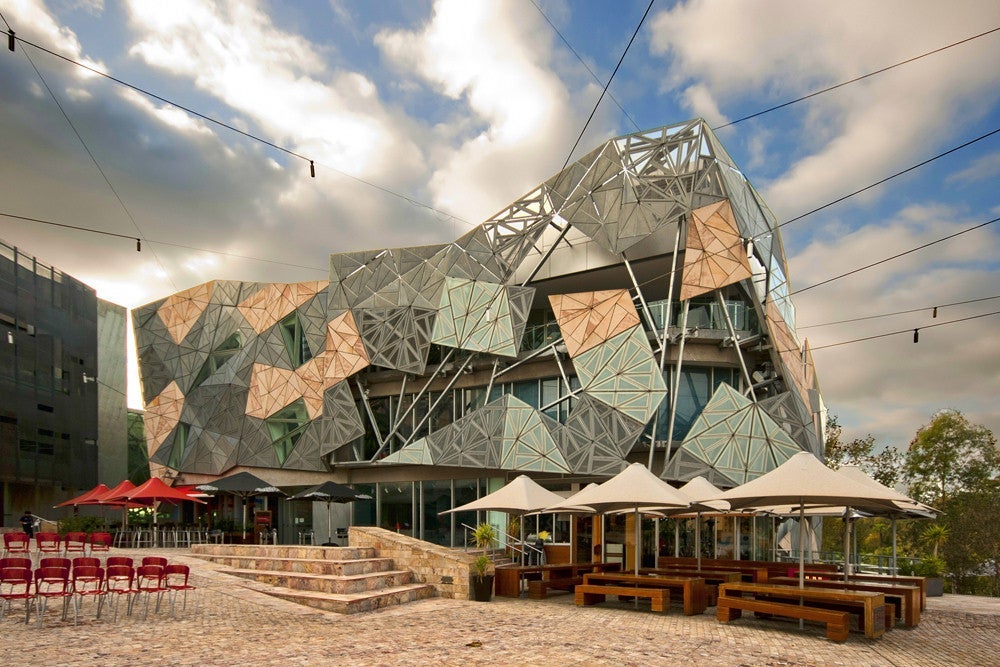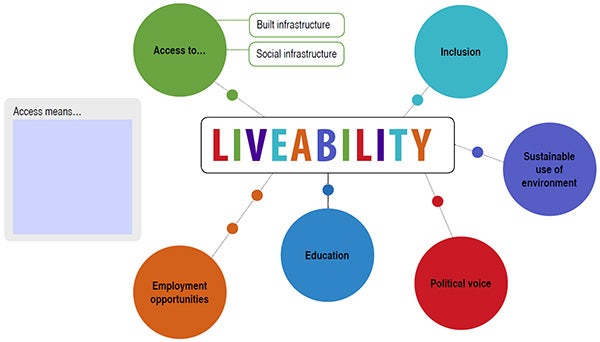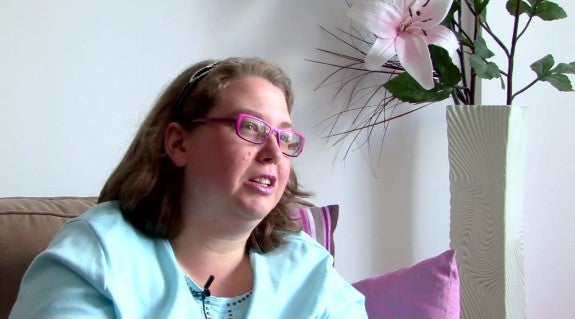Resources
Activity and Resource Sheets
Rights Ed Activity Sheet: Picture Difference
Picture 1A
Picture 2A
Picture 3A
Source: Photograph taken by Wotjek Gurak on Flickr
Rights Ed Activity Sheet: Picture Difference
Picture 1B
Picture 2B
Picture 3B
Source: Photograph taken by Wotjek Gurak on Flickr
Rights Ed Activity Sheet: Defining Liveability
Rights Ed Activity Sheet: What makes a community liveable for different groups of people?
PART A
What features of a community will make that community liveable for each of the following groups of people? Think about access to services, employment, education etc.
Young People
Older People
People with disabilities
Families
People without a car
Which features are shared between multiple groups?
PART B
What features of a community will make that community liveable for each of the following groups of people with disabilities?
People with physical disabilities
People with sensory disabilities
People with psychosocial disabilities
People with intellectual disabilities
Why is it important that a community provides for the needs of different groups of people?
Rights Ed Resource Sheet: Hypothetical discrimination scenarios
- A restaurant refuses Lizzy entry because she has a guide dog.
- The local library can only be accessed via a set of steps. Jack can’t enter the library because he uses a wheelchair.
- Leonard’s teacher will not let him go on an overnight school camp because he has epilepsy and needs medication at night.
- Rachel, who has a hearing impairment, said she was unable to enjoy performances at their local cinema because the venue does not have adjustments to accommodate the needs of people with hearing impairments.
- Joe is not allowed to attend professional training at work because he has autism.
- A store requires Lana, who is vision impaired, to produce a driver’s licence as identification before it will accept her cheque to pay for goods. Lana is not eligible to have a licence because of her vision impairment. The store will not accept other forms of official identification that Lana offers.
- A clothes shop does not have wheelchair accessible changing rooms.
Rights Ed Resource Sheet: Disability Discrimination Act and Access to Premises
What is the Disability Discrimination Act (DDA)?
The Disability Discrimination Act is a national law that aims to eliminate discrimination against people with disabilities, and promote community awareness that people with disabilities have the same rights as all members of the community.
- In which areas of life are people with disabilities protected from discrimination?
| Area | Example |
| Employment | trying to get a job, a promotion or equal pay |
| Education | enrolling in a school, TAFE, university or other college |
| Access to premises used by the public | using libraries, places of worship, government offices, hospitals, restaurants, shops, or other premises used by the public |
| Goods, services and facilities | ability to get goods or services from shops, pubs, places of entertainment, cafes, video shops, banks, lawyers, government departments, doctors and hospitals. |
| Accommodation | renting or trying to rent a room in a boarding house, unit or house |
| Buying land | buying a house, a place for a group of people, or a drop-in centre |
| Activities of clubs and associations | wanting to enter or join a registered club (such as a sports club, RSL or fitness centre), or when a person is already a member |
| Sport | wanting to play, or when playing a sport |
| Commonwealth Government laws and programs | seeking information on government entitlements like Centrelink, trying to access government programs, wanting to use voting facilities. |
- The Disability Discrimination Act and the right to have access to premises used by the public
The right to have access to premises used by the public means that public buildings and other public places need to be accessible to people with disabilities.
This includes:
- Public footpaths and walkways (including Tactile Ground Surface Indicators for people with vision disabilities)
- Educational institutions
- Shops
- Banks and other financial institutions
- Parks
- Public swimming pools
- Cafes, restaurants and pubs
- Government service offices
- Public transport facilities
- Hospitals and other medical facilities
- Cinemas and sports venues
- Libraries and other information and advice centres
- Doctors, lawyers and other professional offices
- Other premises the public or a part of the public is entitled or allowed to enter or use
- Lift including accessible signage(e.g. including Braille)
Improving building access improves liveability and gives more people more opportunity to access employment, education and services, and to connect with the broader community.
Rights Ed Activity Sheet: Disability Discrimination Act and Access to Premises
What is the Disability Discrimination Act (DDA)?
The Disability Discrimination Act is a national law that aims to eliminate discrimination against people with disabilities, and promote community awareness that people with disabilities have the same rights as all members of the community.
- In which areas of life are people with disabilities protected from discrimination?
Instructions: Match each area with the correct example
| Area | Example |
| 1. Employment | using libraries, places of worship, government offices, hospitals, restaurants, shops, or other premises used by the public |
| 2. Education | wanting to enter or join a registered club (such as a sports club, RSL or fitness centre), or when a person is already a member |
| 3. Access to premises used by the public | trying to get a job, a promotion or equal pay |
| 4. Goods, services and facilities | renting or trying to rent a room in a boarding house, a flat, unit or house |
| 5. Accommodation | wanting to play, or when playing a sport |
| 6. Buying land | enrolling in a school, TAFE, university or other college |
| 7. Activities of clubs and associations | seeking information on government entitlements like Centrelink, trying to access government programs, wanting to use voting facilities |
| 8. Sport | buying a house, a place for a group of people, or a drop-in centre |
| 9. Commonwealth Government laws and programs | ability to get goods or services from shops, pubs, places of entertainment, cafes, video shops, banks, lawyers, government departments, doctors and hospitals |
- The Disability Discrimination Act and the right to have access to premises used by the public
The right to have access to premises used by the public means that public buildings and other public places need to be accessible to people with disabilities.
This includes: public footpaths and walkways, educational institutions, ...
Improving building access improves liveability and gives more people more opportunity to access employment, education and services, and to connect with the broader community.
Rights Ed Activity Sheet: Ramped up
Watch the Ramped up video
| Question | Answer |
| Why, until recently, were many buildings difficult for Mark to access? | |
| What is the ‘DDA’? |
|
| What difficulties did Mark face when trying to cross the road? |
|
| What kind of building features can make access difficult for a person using a wheelchair? | |
| What happened in 2010? What was the significance of this change? | |
| In what ways have changes in building access rules improved liveability? | |
| What are some practical ways that Mark’s community has become more liveable for him? | |
| How has Mark contributed to improving the liveability of his community? | |
| Do you think Mark initially felt socially isolated? Why or why not? | |
| Do you think Mark feels more socially connected now? Why or why not? |
Rights Ed Activity Sheet: Room for change
Watch the Room for change video
| Question | Answer |
|
What difficulties did Stella experience in accessing the shop? How did this experience make Stella feel? |
|
|
How did Stella respond to the limited accessibility of the shop for people with disabilities?
|
|
|
How did the shop improve accessibility for people with disabilities?
|
|
|
What was the issue faced by Madeleine?
|
|
| How did Madeleine’s retailer fix this situation? Do you think the solution makes Madeleine feel more socially connected now? |
Rights Ed Activity Sheet: Dee’s Place
Watch the Dee’s Place video
| Question | Answer |
|
What accommodation options did Dee face when deciding how and where to live?
|
|
|
What sorts of support and services did Dee require in order to achieve independent living?
|
|
|
How did Dee’s parents respond to her quest for independence?
|
|
|
How does Dee interact with and contribute to her local community?
|
|
|
How does her independent living contribute to her social connectedness?
|
|
|
Identify the mutual benefits for Dee and her flatmate arising from their shared living arrangements
|
|
|
What are the benefits of having a diverse and inclusive community, as demonstrated by Dee’s story?
|
Image Caption: Dee at home, talking about how much she values her independence. Dee’s Place, 20 Year: 20 Stories
Rights Ed Activity Sheet – How accessible is your school?
Accessibility Rating System
| Excellent | Fully accessible |
| Very Good | Most of facility is accessible |
| Good | Partial accessibility |
| Limited | Poor accessibility |
Instructions
You are a geographer; your job is to find out how liveable your school or another local area is for people with disabilities.
Complete the accessibility audit below and provide feedback to the class.
| Physical feature | Rating | Comments/issues | What can be done to improve accessibility? |
| Footpaths e.g. are there ramps? Are they wide and free of obstructions? Are there steps or other barriers that make it difficult to cross roads? Are there Tactile Ground Surface Indicators on the footpaths to indicate direction? Are there Audio Tactile Pedestrian devices to assist in crossing the road? | |||
| Corridors and doorways e.g. are they wide enough for a wheelchair? Are they free of obstructions? | |||
| Classrooms e.g. are there gaps between tables? Are desks and benches accessible? | |||
| School canteen e.g. can someone using a wheelchair purchase something easily? Are there steps or other barriers? | |||
| Toilets e.g. are there accessible toilets? Do doors meet Australian standards regarding weight? Is there a sink that is accessible? | |||
| Car parking e.g. is it accessible for someone using a wheelchair? Are there steps or other barriers? | |||
| Public Transport e.g. do local buses/train stations take into account people using wheelchairs or who can’t walk up steps? |
Rights Ed Activity Sheet: Proposal to improve liveability of the school environment template
Proposed Strategy:
Description of Strategy: How does the strategy work?
Justification of strategy: How will the strategy improve the liveability of the school for students with disabilities? Why is it important to implement this strategy?
Implementation: How will the strategy be implemented?
Monitoring and Evaluation: How is the effectiveness of the strategy going to be assessed?
Rights Ed Activity Sheet: Access for all
Watch the Access for All video
| Question | Answer |
|
Why couldn’t a person using a wheelchair get on a bus before 1994?
|
|
|
How did Maurice feel about being excluded from public transport because of his disabilities?
|
|
|
What did Maurice do about it?
|
|
|
What changes were necessary to make public transport accessible ?
|
|
|
Why did Maurice hate travelling in the back of a taxi van?
|
|
|
Maurice says he wants to be able to go with his neighbours down to the bus stop and travel to work. Why is it important for him to be able to do this?
|
|
|
Maurice talks about how history tells us that if you keep people separate it really adds to the attitudinal issues. What does he mean by this?
|
|
|
Maurice says that diversity adds to the richness of a community. What does he mean by this?
|
|
|
The former Disability Discrimination Commissioner Graeme Innes says that removal of discrimination is as much about inclusion in community activities as removing the physical barrier. What do you think this means?
|
|
|
Are buses now accessible for people with disabilities? From what year will all public transport be accessible?
|
Rights Ed Resource Sheet: Sydney Morning Herald Opinion Piece
Clear announcements cannot stay in RailCorp's too hard basket
February 4, 2013
"Independence can come at a high price" ... Graeme Innes. Photo: Janie Barrett
1. One of the many clever things that my teachers at the North Rocks School for Blind Children did was to invent a game called railway fun. It used a large sheet of plywood, with little cups glued onto it to represent each of the Sydney railway stations. They were all labelled in braille. Using this game, we entertained ourselves while learning the railway system, an incredibly useful piece of knowledge for blind students.
2. I've spent much of my life on trains. Mum didn't drive, so we used them a lot to get around as children. I went to eisteddfods on trains. I went to watch NSW play at the SCG on trains. We visited friends on trains, and went to Newcastle to visit my aunt on trains.
3. As I grew up, I went to barrack for the Magpies - now the Tigers - with my brother on trains. And when I started using a white cane and travelling alone, I visited friends, went to social events, to university and work on trains. They are an integral part of my life.
4. In fact, I refuse to live more than walking distance from a railway station. I've used trains in Sydney, in Perth, in London and in New York - places where I have lived and worked.
5. Being able to use trains has been a key part of my independence. I can find my way to the station. I can find the right platform. I can get onto the train, and find a seat. But how do I know where I am?
6. My knowledge of the train system, and the announcements on our stations, mean I can usually catch the right train. But, once I'm on board, it becomes harder. Sometimes the stations are announced, but not always. Where the announcements are automatic, they are pretty reliable. But where the announcements are done manually, on the older trains where the PA equipment is not as good, the reliability drops.
7. What option does that leave me? I can try to listen to the sounds outside - the sounds of tunnels and bridges - but that's hard through closed doors and sealed windows. I can count stations, but it's easy to lose count. As a last resort, I ask other passengers. This always is the last resort because - in empty trains - they are hard to find, and you often don't get the right information when you do find them.
8. These methods often don't work. My family calls it train tennis - going past my station, coming back, and (on one famous occasion) missing it for the second time. Like the tennis ball crossing the net but not landing on it.
9. Journeys without announcements are far less relaxing for me - I can't read, think or sleep. They cause me tension and headaches, and my normally sunny personality takes a turn towards the dark side.
10. And why should I not have the information, just because I happen not to be able to see? All I asked RailCorp [the NSW rail corporation] to do, as it does for passengers who can see, is tell me where I am.
11. I, and others who are blind, asked when the NSW Anti-Discrimination Act was changed in 1981 to cover the ground of disability. I, and others who are blind, asked again when the federal Disability Discrimination Act was passed in 1992. And we asked again in 2007 when announcements were required by the Disability Standards for Accessible Public Transport passed under the Disability Discrimination Act.
12. RailCorp's response has always been: ''We understand the problem. It's on our list of things to fix - in our own sweet time.'' So while blind people in most other cities in the world know where they are on a train, those in Sydney have to wait.
13. I got tired of waiting. So, after due warning, I began to lodge discrimination complaints every time I rode on a train and was not told where I was. But RailCorp intransigence continued. Not prepared to accept my many offers of settlement, it fought me all the way to the Federal Court. After much soul-searching and prayer with my wife, I ran a case in which - if I had been unsuccessful and had costs awarded against me - we could have lost our house.
14. Independence can come at a high price. But hopefully RailCorp will now accept the umpire's decision, and tell me where I am.
Graeme Innes is Australia's former Disability Discrimination Commissioner
Activity Sheet: Clear announcements cannot stay in Railcorp’s too hard basket
Paragraph 1
Why did Graeme’s teachers invent the game railway fun?
Paragraph 2-5
Why do you think trains were so important to Graeme as he started using a white cane and travelling alone?
Paragraph 6-7
Why does it become more difficult for Graeme to know where he is, when he is on the train?
Paragraph 8
Why does Graeme’s family call it train tennis?
Paragraph 10
What was Graeme asking Railcorp to do?
Paragraph 11
How long have Graeme and other people who are blind been asking for train announcements?
Paragraph 12
What was Railcorp’s response?
Paragraph 13
What did Graeme do because he was tired of waiting?
Paragraph 14
Graeme won his court case, what does he hope Railcorp will do now?
Rights Ed Literacy Activity Sheet: Sydney Morning Herald Opinion Piece
Instructions: In the brackets, write the synonym of the bolded word. Answer the questions after each paragraph.
Clear announcements cannot stay in RailCorp's too hard basket
February 4, 2013
What is Railcorp?
1. One of the many clever things that my teachers at the North Rocks School for Blind Children did was to invent a game called railway fun. It used a large sheet of plywood, with little cups glued onto it to represent each of the Sydney railway stations. They were all labelled in braille. Using this game, we entertained ourselves while learning the railway system, an incredibly useful piece of knowledge for blind students.
2. I've spent much of my life on trains. Mum didn't drive, so we used them a lot to get around as children. I went to eisteddfods on trains. I went to watch NSW play at the SCG on trains. We visited friends on trains, and went to Newcastle to visit my aunt on trains.
What is an eisteddfod?
3. As I grew up, I went to barrack (__________________) for the Magpies - now the Tigers - with my brother on trains. And when I started using a white cane and travelling alone, I visited friends, went to social events, to university and work on trains. They are an integral (__________________) part of my life.
Who are the Tigers?
What is a white cane used for?
4. In fact, I refuse to live more than walking distance from a railway station. I've used trains in Sydney, in Perth, in London and in New York - places where I have lived and worked.
5. Being able to use trains has been a key part of my independence (__________________). I can find my way to the station. I can find the right platform. I can get onto the train, and find a seat. But how do I know where I am?
6. My knowledge of the train system, and the announcements on our stations, mean I can usually catch the right train. But, once I'm on board, it becomes harder. Sometimes the stations are announced, but not always. Where the announcements are automatic, they are pretty reliable. But where the announcements are done manually (______________________________), on the older trains where the PA equipment is not as good, the reliability drops.
What is PA equipment?
7. What option does that leave me? I can try to listen to the sounds outside - the sounds of tunnels and bridges - but that's hard through closed doors and sealed windows. I can count stations, but it's easy to lose count. As a last resort, I ask other passengers. This always is the last resort because - in empty trains - they are hard to find, and you often don't get the right in formation when you do find them.
8. These methods often don't work. My family calls it train tennis - going past my station, coming back, and (on one famous occasion) missing it for the second time. Like the tennis ball crossing the net but not landing on it.
What does the phrase ‘train tennis’ mean?
9. Journeys without announcements are far less relaxing for me - I can't read, think or sleep. They cause me tension and headaches, and my normally sunny personality takes a turn towards the dark side.
10. And why should I not have the information, just because I happen not to be able to see? All I asked RailCorp to do, as it does for passengers who can see, is tell me where I am.
11. I, and others who are blind, asked when the NSW Anti-Discrimination Act was changed in 1981 to cover the ground of disability. I, and others who are blind, asked again when the federal Disability Discrimination Act was passed in 1992. And we asked again in 2007 when announcements were required by the Disability Standards for Accessible Public Transport passed under the Disability Discrimination Act.
12. RailCorp's response has always been: ''We understand the problem. It's on our list of things to fix - in our own sweet time.'' So while blind people in most other cities in the world know where they are on a train, those in Sydney have to wait.
What does the phrase "in our own sweet time" mean?
13. I got tired of waiting. So, after due warning, I began to lodge discrimination complaints every time I rode on a train and was not told where I was. But RailCorp intransigence (_____________________) continued. Not prepared to accept my many offers of settlement, it fought me all the way to the Federal Court. After much soul-searching and prayer with my wife, I ran a case in which - if I had been unsuccessful and had costs awarded against me - we could have lost our house.
What does soul-searching mean?
What does the phrase "ran a case" mean?
14. Independence can come at a high price. But hopefully RailCorp will now accept the umpire's decision, and tell me where I am.
Who was the umpire in this case?
What was the outcome of the case?
Graeme Innes is Australia's former Disability Discrimination Commissioner
What is the difference between a manual and an automatic announcement?
Rights Ed Resource Sheet: Glossary
| Word | Meaning |
| Accessibility | Accessibility is the degree to which a product, device, service, or environment is available to as many people as possible. |
| Convention on the Rights of Persons with Disabilities (CRPD) |
The United Nations Convention on the Rights of Persons with Disabilities (CRPD) is an international human rights treaty. The purpose of the Convention is to promote, protect and ensure the full and equal enjoyment of all human rights and fundamental freedoms for all people with disability, and to promote respect for their inherent dignity. It came into force in 2008 and was ratified by Australia in July of that year. |
| Disability |
The CRPD describes disability as an evolving concept and that disability results from the interaction between persons with impairments and attitudinal and environmental barriers that hinders their full and effective participation in society on an equal basis with others. Persons with disabilities include those who have long-term physical, mental, intellectual or sensory impairments. |
| Disability discrimination | The CRPD describes disability discrimination as any distinction, exclusion or restriction on the basis of disability which has the purpose or effect of impairing or nullifying the recognition, enjoyment or exercise, on an equal basis with others, of all human rights and fundamental freedoms in the political, economic, social, cultural, civil or any other field. |
| Infrastructure |
Facilities or services needed for the functioning of a community or society Built infrastructure – physically built facilities/amenities needed for the functioning of a community e.g. roads, bridges, shops, post offices, power lines, transport networks Social infrastructure – facilities that are needed for the provision of social services e.g. education facilities, health facilities, community clubs or organisations |
| Liveability | Based on the ability of all individuals to participate actively and politically in the community, have access to equal employment opportunities, and built and social infrastructure. Liveability also depends upon the sustainable environmental practices that are implemented in a community. |
| Social connectedness | Refers to the relationships people have with others and the benefits these relationships can bring to the individual and society. It includes relationships with family, friends, colleagues, neighbours, as well as connections people make through paid work, sport, community service and other leisure activities. |
| Social inclusion | All people feel valued, their differences are respected and basic needs are met. There is opportunity for all individuals to have freedom of speech; participate in society through employment and access to services; and to connect with family, friends and the local community. |

